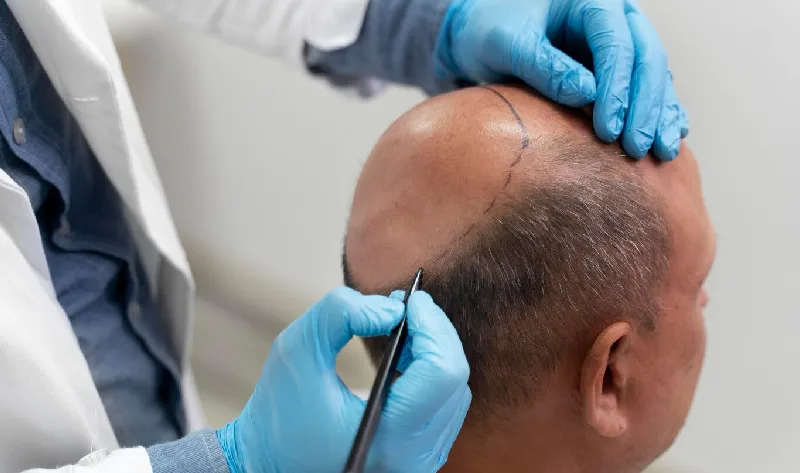Hair loss can affect different areas of the scalp, and for many people, the temples are one of the first places where thinning becomes visible. The temples, located on the sides of the forehead, play a key role in framing the face. When hair recedes in these areas, it can make the hairline look older and more pronounced. For some, this change happens alongside thinning at the crown of the head, while others experience it independently. Whether a Crown Hair Transplant in Dubai can help with temple thinning depends on several factors, including the extent of hair loss, the quality of donor hair, and the chosen surgical technique.
The Difference Between Crown and Temple Hair Loss
The crown area is located at the back of the head and tends to thin in a circular pattern. Temple hair loss, on the other hand, typically starts with the hairline moving backward, creating an “M” shape. These two regions have different hair growth angles, density requirements, and natural patterns. Because of these differences, not every hair transplant designed for the crown will be equally effective for temples unless adapted to suit the unique growth pattern of the area.
Why Temple Hair Transplants Require a Different Approach
Temple hair restoration demands a precise and artistic approach. The surgeon must recreate a natural, soft hairline that blends with the existing hair. Unlike the crown, where hair whorls can be recreated with strategic placement, temples require a delicate transition to avoid a harsh or unnatural look. The hair used for the temples is often finer than that used in the crown area to ensure the results look natural when framing the face.
Can a Crown Hair Transplant Address Temple Thinning?
While crown and temple restorations can sometimes be done together, a crown hair transplant on its own is usually not enough to restore temple hair. That’s because the design, direction, and density requirements differ significantly. However, in some cases where hair loss affects both the crown and temples, surgeons can plan a combined approach, using donor hair to cover both regions in a single or staged procedure.
Factors That Influence Success in Temple Restoration
Several key factors determine whether a transplant will work effectively for temple hair loss:
- Donor Hair Availability – Strong, healthy hair from the back or sides of the head is essential.
- Hairline Design – The natural shape and recession pattern must be considered for a seamless look.
- Hair Characteristics – Texture, color, and curl can affect how well transplanted hair blends with existing strands.
- Surgical Technique – Precision in angling and placement is crucial for temples.
When these factors are optimized, temple restoration can produce excellent, long-lasting results.
Recovery and Aftercare for Temple Transplants
Temple hair transplants generally follow the same recovery timeline as other areas of the scalp. Initial redness, minor swelling, and small scabs are common in the first few days. Most patients can return to work within a week, but strenuous activities should be avoided for at least two weeks. Full hair growth results typically appear within 9–12 months, with gradual thickening over time. Following aftercare instructions closely ensures the best possible outcome.
Combining Crown and Temple Restoration
In many cases, individuals who experience hair loss in the crown also have thinning temples. Addressing both areas in a single treatment plan can create a balanced and youthful look. This may involve distributing donor hair strategically between the crown and temple regions, ensuring both areas receive adequate coverage. The choice between one session or multiple sessions depends on donor hair reserves and the extent of hair loss.
Cost Considerations
While it’s not possible to provide exact figures, it’s important to understand that temple restoration may require more precision and artistry than crown work. The overall investment will depend on the complexity of the procedure, the number of grafts needed, and whether both the crown and temples are treated at the same time. Patients should focus on quality, experience, and natural results rather than seeking the lowest price.
Is a Temple Hair Transplant Right for You?
If your hair loss is primarily at the temples, a tailored temple hair transplant might be the better choice than a standard crown-focused procedure. Consulting with an experienced surgeon is the best way to determine whether you’re a candidate for a combined approach or a dedicated temple restoration. Factors such as your age, hair type, and future hair loss pattern will all be considered when creating a personalized plan.
Final Thoughts
Temple thinning can have a significant impact on your appearance, but with the right surgical plan, it is possible to restore a youthful, natural hairline. While a standard crown procedure alone may not fully address temple recession, a customized approach can deliver impressive results. Whether you’re looking to restore your temples, crown, or both, the most important step is working with a skilled professional who understands the art and science of hair transplantation. For those considering their options, Crown Hair Transplant Dubai procedures can be adapted to create seamless results in the temple region, provided the treatment plan is carefully designed.





Comments